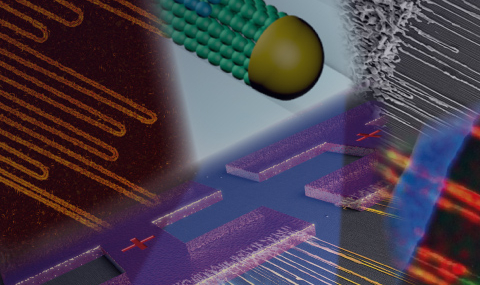The discovery of new materials has always revolutionized our society and life style. This is attested by the fact that important ages in the development of civilization are named after the material that brought to it: Stone Age, Bronze Age, Iron Age, the age of plastics, and the age of semiconductors, in which we live today, where these materials are used to make the electronic devices that enable us to work, communicate and enjoy life. The recent realization that materials behave differently at the nanometer scale, and the development of new tools to manipulate matter at the scale of its basic units, have ushered the beginning of what may one day be called the "Nano Age".
Nanometer-scale materials can have unique properties due to their reduced dimensions and serve as building blocks for the assembly of miniature functional systems. In macroscopic functional systems, one-dimensional (1D) structures like wires, tubes and rods play critical roles of transporting energy, forces, matter and information. Two-dimensional (2D) stuctures like sheets and coatings can also serve to wrap, protect, filter or devide. Which materials could play analogous roles at the smallest possible scale? How does the reduced dimensionality determine the properties of 1D and 2D nanostructures? How can they be organized and integrated into functional systems?
Our research focuses on the formation, structure and properties of 1D nanomaterials (e.g. carbon nanotubes, inorganic nanotubes) and 2D materials (e.g. graphene, boron nitride, transition metal dichalcogenides and new materials that we discover); their characterization by mechanical, electrical, optical and magnetic measurements at the nanometer scale; and their integration into functional nanosystems, such as ultra-miniaturized logic circuits, photodetectors, solar cells, inertial sensors, and potential devices for neuromorphic and quantum computing. We place a special emphasis on understanding and mastering the self-organization of ordered structures and the coupling between different properties, both of which enable new functionalities at the nanoscale.


